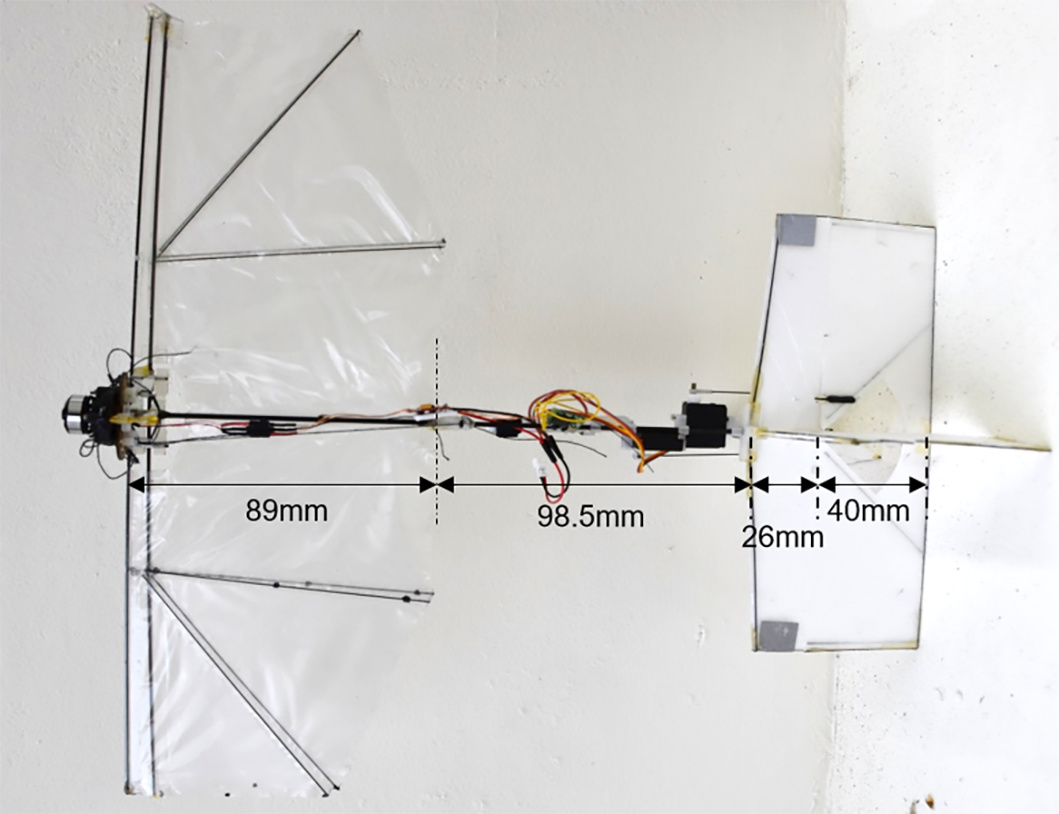Dynamic drones
Drawing inspiration from creation

Drones can be flown by hobbyists like myself for fun,1 to record video or take photos. Professionals increasingly use them for remote sensing2 and surveys; even the military use drones for reconnaissance and warfare. Drones with rotary wings can hover, fly forwards, backwards and sideways with ease, plus accelerate or decelerate quickly.3
Drawing inspiration from creation, a multinational research team (Singapore, China, Taiwan, and Australia) recently produced a new robotic drone that flaps its wings somewhat like a bird. This revolutionary design enables high-speed aerobatic manoeuvres once thought impossible for motorized drones. Mechanical flying machines that flap their wings are called ornithopters (from Greek ornithos, ‘bird’, and pteron, ‘wing’). By studying creatures that fly, the researchers were able to reverse-engineer some of their incredible aerodynamic and biomechanical abilities.
New bio-inspired technology
The new drone design has radically ‘upped the ante’ in terms of maneuverability and efficiency. It has two sets of flapping ‘X’-wings and a unique tail configuration. This enables it to speedily ‘flip on a dime’, as well as hover—something only smaller flapping drones could do previously.3 It also expends 40% less energy than propeller-driven drones using a motor of the same power. This is because spinning propellers have various friction losses additional to those of motorized flapping flight.4
The engineers took inspiration from birds (especially swifts), which can change their wing shape for different modes of flight:
“… avian flight starts with take-off by forceful wingbeats and then settles to an efficient cruise condition before ending with descent and touchdown at low vertical speed using an aerodynamic braking maneuver known as flare.”3
For flapping drones, all these aspects of flight are more efficient and versatile compared to fixed-wing or rotary drone flight.3
The new ornithopter drone weighs a mere 26 g (1 oz). Its fuselage is c. 200 mm (8 in) long, and it has four flexible wings, with a span of 280 mm (11 in). It also has a unique stabilizing tail configuration that enables the drone to hover, dart, and turn rapidly during piloting. The drone is driven by a small, powerful hobbyist 4.2 V micromotor, weighing just over 3 g (0.1 oz), which provides c. 40 mN of thrust.3
Outclassed by flying creatures
Professor Javaan Singh Chahl of the University of South Australia compared their new mechanical drone to flight in living creatures. He said their drone’s flapping mechanism:

“…tends to be fragile, if it collides with something it will break … This is not the case with the wings of butterflies and birds.”5
Drawing further inspiration from creation, one of Prof. Chahl’s PhD students is investigating actuators (controlled components involved in movement) that behave more like muscles. They oscillate—like biological wing beat movements—rather than spin, as in rotary flight.4
The team’s bird-inspired drone is impressive work. But lead research scientist Dr Yao-Wei Chin of the National University of Singapore implies that their technology pales in comparison to biological flight:
“Although ornithopters are the closest to biological flight with their flapping wing propulsion, birds and insects have multiple sets of muscles which enable them to fly incredibly fast, fold their wings, twist, open feather slots and save energy … Their wing agility allows them to turn their body in mid-air while still flapping at different speeds and angles. … common swifts can cruise at a maximum speed of 31 metres a second, equivalent to 112 km per hour [c. 70 mph].”4
Designs require designers
It took clever scientists many hours of planning, design and forethought to copy but a fraction of the flight characteristics of living creatures. These were specially created by God on Day 5 of Creation Week (Genesis 1:20–23). Yet, such brilliance observed in the natural world is seldom acknowledged as the work of the Creator. For instance, Prof. Philippe Lavoie (an aviation expert at University of Toronto) has been inspired by seagull wings to create longer-soaring drones. However, he still gives credit to evolution for the designs he sees in nature:
“The idea of bio-inspired research is to try and understand how nature does it, given that it had millions of years to adapt to certain conditions.”6
Irreducible 4-bar mechanisms

The designers of this new drone build on the work of previous researchers. These include Professor Stuart Burgess of Bristol University (UK), whose work they reference. Burgess has written for Creation magazine, and is a prize-winning biomimeticist7—an engineer who draws inspiration from living organisms.8 He himself has patented a flapping drone, and shared his expert opinion about this new design:
“This latest micro air vehicle design includes precision design of bearings and gears, as well as an advanced control system, thus showing that such a system requires careful planning and design. There is even a crank-rocker 4-bar mechanism to form the wing joint. Interestingly, insects also have 4-bar mechanisms in their wing joints. Such mechanisms are inherently irreducible, meaning they cannot evolve in small steps.”9
As with Professor Burgess’s drone, the new one uses a crank-rocker mechanism to convert rotary motion into a rocking motion. This is similar to how car windscreen wipers work. The equivalent mechanisms in insects are called ‘rocker-rockers.’10 Birds also have 4-bar mechanisms in their wings. Many animals have them in their knee joints, as do humans.11
Divine design should inspire devotion
As Professor Burgess makes clear, 4-bar mechanisms are brilliant design solutions which could never arise by evolution. Design engineers do well to borrow ideas from the living world, because it is all the work of the Master Designer—Jesus Christ (Colossians 1:16)—who, in the beginning, declared His Creation “very good” (Genesis 1:31). We can rightly applaud the engineers for their brilliant new ornithopter. But how much more should we praise the Creator of the flying creatures which inspired them in the first place?
References and notes
References and notes
- For interested viewers see my drone videography channel: youtube.com/playlist?list=PL7KVERipg6GjS2fjXmg6ALX1ua1cSg72M. Return to text.
- Detecting electromagnetic radiation, e.g. visible light, infrared, microwave, gamma ray, UV, and the spectra of various chemicals. Return to text.
- Video of the new drone: tinyurl.com/3b42t5b6. See also Catchpoole, D., Flapping flight challenge, Creation 42(2):2021, Apr 2020; creation.com/ff-challenge. Return to text.
- Chin, Y.W. et al., Efficient flapping wing drone arrests high-speed flight using post-stall soaring, Science Robotics 5, eaba2386, 20 Jul 2020. Return to text.
- Andrews, C., By flapping its ‘wings’, this drone soars above the rest; createdigital.org.au, 17 Dec 2020. Return to text.
- Cranenburgh, N., ‘Morphing’ gull-like wings could help drones soar farther; createdigital.org.au, 7 Jan 2019. Return to text.
- creation.com/prof-stuart-burgess. Return to text.
- Bell, P., Stuart Burgess wins the 2019 James Clayton Prize; creation.com/sb-clayton, 2 Jan 2020; see also this interview with him at creation.com/biomimetics-prof-burgess. Return to text.
- Burgess, S., personal email to Gavin Cox, 28 Jan 2021. Return to text.
- Conn, A.T., Ling, C.S., and Burgess, S.C., Design of a parallel crank-rocker flapping mechanism for insect-inspired micro air vehicles, Proc. I. Mech. E., Part C: Journal of Mechanical Engineering Science 221(C):1211–1222, 2007. Return to text.
- Burgess, S., Critical characteristics and the irreducible knee joint, J. Creation 13(2):112–117, 1999; creation.com/kneejoint. Return to text.









Readers’ comments
Comments are automatically closed 14 days after publication.